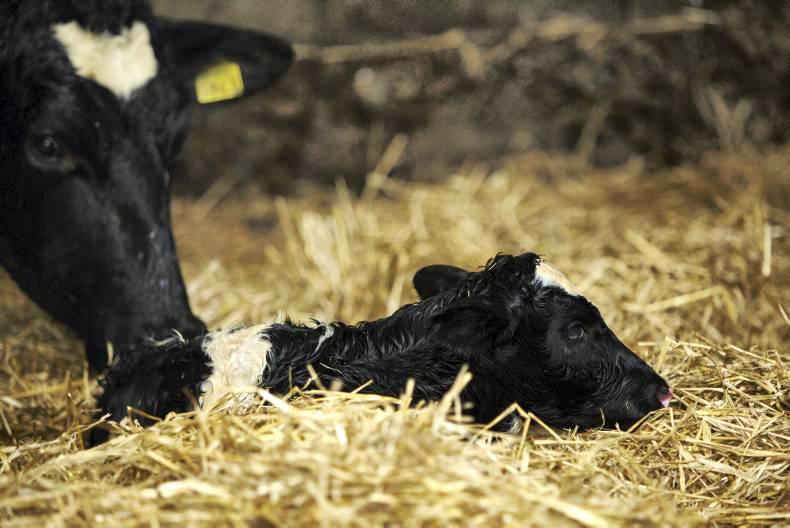On arrival to the farm, I got out of my jeep and while getting my gear on, I could hear coughing coming from the newborn calf shed. As I met the farmer, he showed me a yearling that he had found dead the night before and said at least three or four more were sick. We walked through the young stock to see streaming noses, audible coughing and visible heavy breathing in some. We had a herd outbreak of what seemed like viral pneumonia.
Up to last summer, this herd had been locked up with TB for nearly two years. With a closed herd, the farmer was forced to buy in 20 replacement heifers in early December 2015, and again in late February 2016 when 10 were bought.
We started to put pieces of the puzzle together and came up with a short-term plan. We performed a postmortem on the dead heifer and found severe pulmonary changes consistent with bacterial pneumonia.
We examined and treated the sick animals. We decided because of the severity and the speed of the outbreak that we needed to treat the two batches of affected young stock. On examining the calves, we also decided that because of high temperatures and coughing, they all needed to be treated with antibiotics and anti-inflammatories.
Source of the virus
We then focused our attention after emergency treatments to the potential source of the virus. On further questioning, the farmer said the heifers bought in December never thrived or milked properly. He had noticed his cow herd starting to cough from early February on. The recently purchased heifers also started coughing two weeks after arrival.
A clear picture was emerging that we had most likely a viral pneumonia outbreak started by the bought-in animals in December, spreading through the whole herd and then also to the latest arrivals (the 10 bought in February) shortly after arriving on the farm.
We agreed that he would get on with treating the younger stock and on Monday we would investigate the milking herd more thoroughly. He treated the two batches and calves with good results and no further losses.
Revisiting the farm
On Monday I revisited the farm and went through the milking herd. It was very clear that there was coughing, but most striking was the nasal discharges that were running from more than 50% of the herd.
The farmer asked me to pick out what I thought were the worst affected, which I did. Eight of the nine I picked out were belonging to original bought-ins. He said they never thrived at all when entering the herd.
Luckily the farmer was feeding the cows excessively, meaning that they were under no nutritional strain – something I feel saved him in the short term from getting lots of very sick cows. In my experience, these virus outbreaks coupled with nutritional stress can lead to disastrous consequences.
We proceeded to carry out diagnostic testing. We nasal-swabbed 12 fresh cases and also blood-tested eight yearlings. The bloods may need to be repeated in three weeks. We examined several cows also.
I am very confident that these original bought-in cattle were virus carriers and shedders on arrival when the original problem started. It has been brewing since coming to a dramatic head last week. I can only guess what the virus is, but that is a dangerous presumption in my opinion. We will now hopefully isolate the virus or viruses affecting the cows and strategically vaccinate them.
This case illustrates a few things:
1. Farming can be relentless, getting knock after knock, and that can put a huge mental strain on farmers. This farm had TB followed by this, testing the reserves of a very solid man.
2. The danger of bought-in stock to a closed herd. The need to source stock carefully and consider testing, quarantines and vaccinating.
3. The speed at which viral flare-ups can go through herds. The danger of young stock sharing airspace with older animals.
4. The need to identify the virus or viruses affecting the herd quickly and accurately.
5. The need for ongoing disease monitoring schemes, especially where cattle are being moved on and off farms.
It is worth mentioning, due to the symptoms and the time of year, that I could rule out lungworm, but in the coming months in dairy herds this is also a risk with coughing cows at pasture. Unlike his TB breakdown, I hope I have given this farmer some sense of control of the problem. We’ve identified the risk and we will put an ongoing control plan in place.
Aside from the cows, this case highlighted once again the huge pressures farmers face. On a very human level, farmers need support during these stressful times – something as a vet I’m not trained to offer. However, as I continue to deal with these situations, it is a reality I can’t hide from either.






 This is a subscriber-only article
This is a subscriber-only article










SHARING OPTIONS: